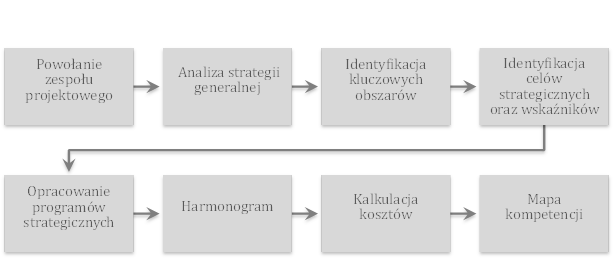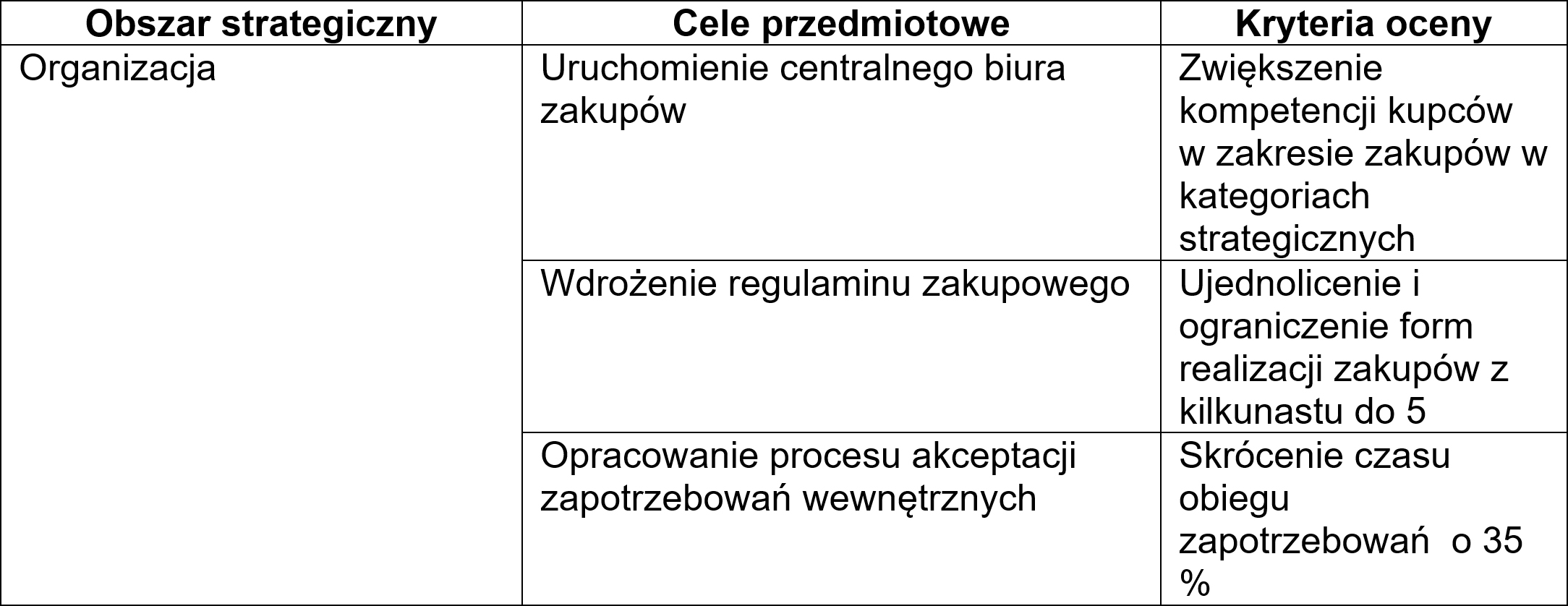Designing of the procurement strategy

Strategic intent
The strategic intent document exists in connection with other key documents that include the bylaws and the procurement procedure. While the above-mentioned documents, which are part of the organizational structure, describe repeatable processes and activities, the strategy will normally contain a description of projects of an ad hoc nature, some of which may become processes in the future. Moreover, the strategic intent may assume significant changes in the organizational structure, and thus in the key documentation concerning the procurement area,in particular with regard to bylaws, procedures and instructions. At the same time, the procurement strategy should be in line with the assumed procurement policy and the company’s overall strategy, as I have already mentioned in this article. When designing the procurement strategy document called ‘strategic intent’, firstly it is worth discussing the degree of formalization, which usually results from the organizational culture of a given enterprise, as well as the specific nature of internal regulations already in place.
Process of designing the procurement strategy
Strategic areas
Development of the strategic intent requires, first of all, defining the key directions and areas to be covered by the measures implemented under the strategy. Typical strategic areas include:
- organization
- procurement category
- suppliers
- savings
- risks
- demand management
- image
- cooperation with internal customers
- quality
- process performance
Defined strategic areas may have both priorities and internal linkages. For example, firstly central categories will be identified and, afterwards, the organizational structure of the procurement department will be changed. Designing and then implementing a procurement strategy is not a one-off undertaking. As basic problems are solved, e.g. internal demand management, there will appear further areas of potentially optimizable activities.
Strategic goals
In individual strategic areas, there is a need to identify subject goals (what we intend to do) and performance goals (on what basis we will evaluate fulfillment of the goal). Subject goals may appear in strategies for subsequent years in an unchanged form, e.g. generation of savings, but with other performance indicators, e.g. 10% in 2018, 15% in 2019. Defining of performance goals also requires an analysis of the possibility of measuring the extent to which the goal is fulfilled. The more measurable the goals, the smaller the future problems associated with analysis of progress of works under the procurement strategy.
Examples of goals for the area of organization
Action programs
Success in the implementation of the strategy is defined as achievement of the assumed strategic goals. In order to do so, programs of actions should be developed i.e. tasks aimed at achieving these goals. The tasks defined within the program should be complete and should define in detail the desired scope of work. The actions defined in the program will be at different levels of detail, which, in practice, boils down to disaggregation of subject tasks. Usually the third level of disaggregation is not exceeded.
Example of detailed tasks as part of the strategic intent:
1.Implementation of procurement category management
1.1. Conduct of category management training for the project team
1.2. Identification of procurement categories at workshops
1.2.1. Identification of the direct procurements category
1.2.2. Identification of the indirect procurements category
1.3. Development of a job description for the category manager
1.4. Recruitment and selection of managers of strategic categories
1.5. Development of a map for implementing the strategy for procurement categories
The go-ahead
The designed procurement strategic intent document will require the approval of both the managers of the given area and the management board. In some cases, different business problem-solving options will need to be presented, along with the expected implementation costs. Implementation of the strategy is based on the approval of the strategic intent by the Management Board, which allows measures to be taken aimed at implementing the programs.
Monitoring the implementation of the strategy
Effective implementation of the strategy requires motivation and commitment at various stages of works. Monitoring of progress is crucial to the success of this undertaking. One of the methods is to organize e.g. weekly meetings to discuss the completed tasks and to define an intent for the next period in relation to the adopted schedule. Such an approach eliminates the problem of a decrease in the involvement of team members in the later phases of works on the strategy. It is also worth developing a simple tool for managing the knowledge of the completed tasks, which will certainly facilitate communication in the project team.
Conclusion
Strategic intent is one of the basic procurement documents apart from the bylaws and procedures. It is the primary driving force behind optimization measures in many different areas. At the same time, it is a living organism that needs to be modified on an ongoing basis due to changing business situation and implementation problems encountered. It is an excellent tool for efficient communication not only within the project team, but also between managers representing different functional areas. It is a source of knowledge for the company’s management board that allows better understanding of procurement processes and greater involvement in this key business area. In this article, I have tried to show, at least briefly, how to approach designing of the strategic intent document. I hope that my remarks and suggestions will make easier the work of those responsible for developing a procurement strategy.


